After an unplanned stop in Coinjock, NC, while on the ICW, the author learns how boat mechanics and marinas can quite literally save the day.
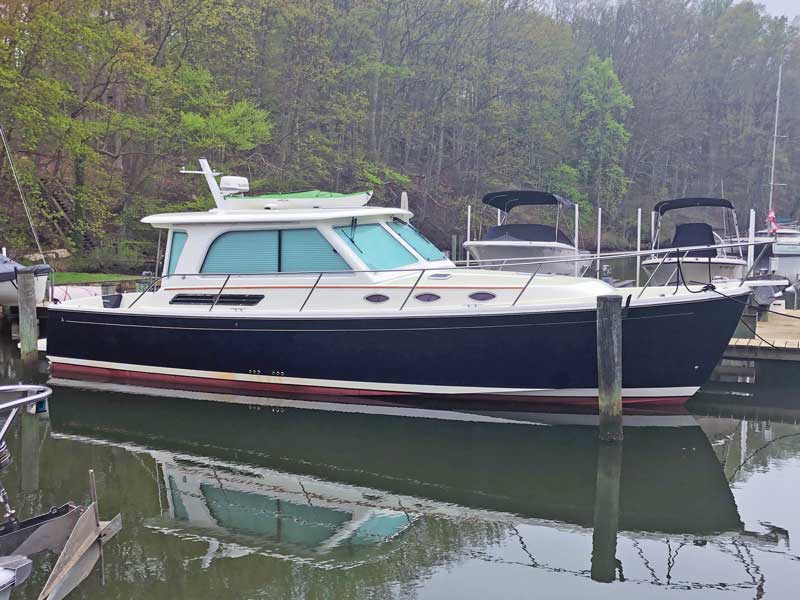
In the boating life there is nothing like the sound of silence. Sailors always anticipate and appreciate that moment when the sails are raised and full and the engine is shut down. The smooth and quiet acceleration inevitably brings a smile.
For powerboaters on the other hand, the sound of silence, after an unplanned engine shutdown, is not so much fun. The rather abrupt deceleration accompanying the silence is going to bring a frown, to say the least. Such was our recent experience crossing the Albemarle Sound.
Let me begin at the beginning. We bought a new-to-us boat. The “we” comprises me and my lovely wife and able mate, Sue. Together we have owned and cruised more boats than should be allowed in one pair of lifetimes. No complaints!
The new boat is a lightly used and newish downeast cruiser. She was in Myrtle Beach when we found her. We put her under contract, sight unseen. Such is the state of the overheated boat market.
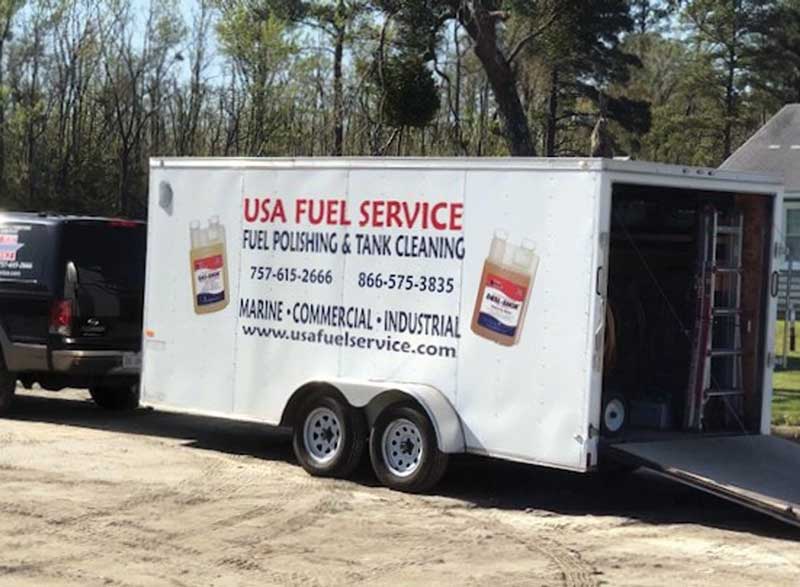
The customary and important hull survey, engine survey, and sea trial were arranged by phone and email. A flight to Myrtle Beach with our broker, Bill Walczak of Walczak Yacht Brokerage Service, on the appointed survey day brought it all together. A small team of professionals swarmed over the boat. Six hours later the verdict was good. That sealed the deal, and a closing date was identified while we made plans to get the new boat home. We anticipated a quick delivery, covering the 500 miles from Myrtle Beach to Annapolis. The new boat had other plans.
The delivery run from Myrtle Beach was uneventful until crossing the Albemarle Sound. The Sound was a “washing machine” that morning with wind out of the west and the resulting short but steep chop on the beam. It was predicted to get worse in the afternoon, so we planned for a completed crossing before noon. Just a mile short of the relative protection of the North River, the sounds of silence hit us as the engine sputtered and shut down.
You know the drill from there. We restarted the engine several times only to experience the engine sputtering and shutting down again. Finally, she would not even start. Accepting defeat, the anchor splashed, and we called BoatUS for a tow.
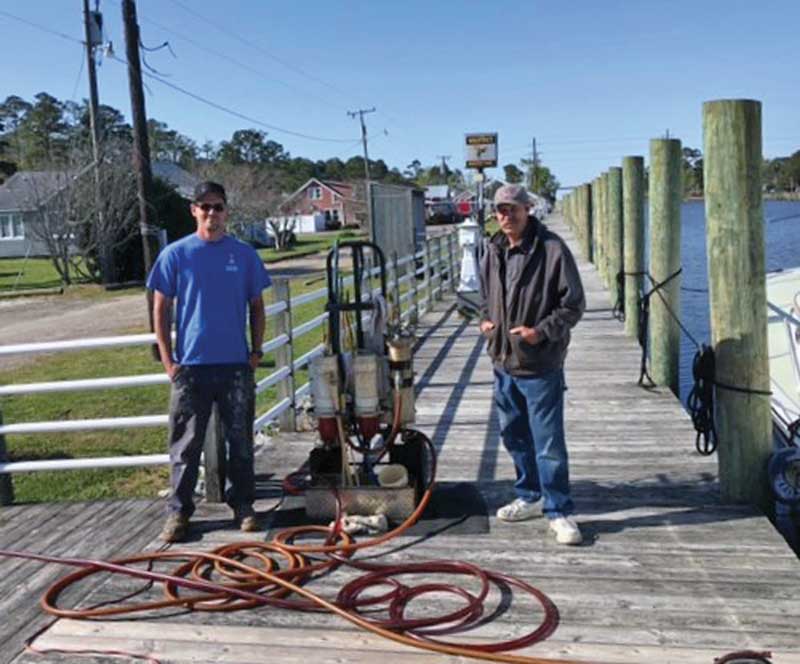
Tow BoatUS captain Brooks Keith came to the rescue. As the wind and waves built, it began to feel like riding a hobby horse. As I worried about dragging the anchor, Brooks made his way from Coinjock, NC, to us, 15 miles away. Upon arrival he expertly passed us a towing bridle, while bouncing in the washing machine waves, and soon we were on our way to the protected waters of the North River and on to Coinjock.
The Coinjock Marina is a slice of boating Americana. It is 1200 linear feet of face dock, a restaurant, and a small boating-oriented convenience shop right on the Intracoastal Waterway, about 50 miles south of Mile Zero in Norfolk.
As Tow BoatUS nudged us gently to the face dock, we were met by diesel mechanics Brian Scott, owner of Sound Decisions Marine Repair, and his new colleague, John Lowell. A call to the Coinjock Marina, while under tow, had connected us with them, and the meeting was all arranged by phone before our arrival.
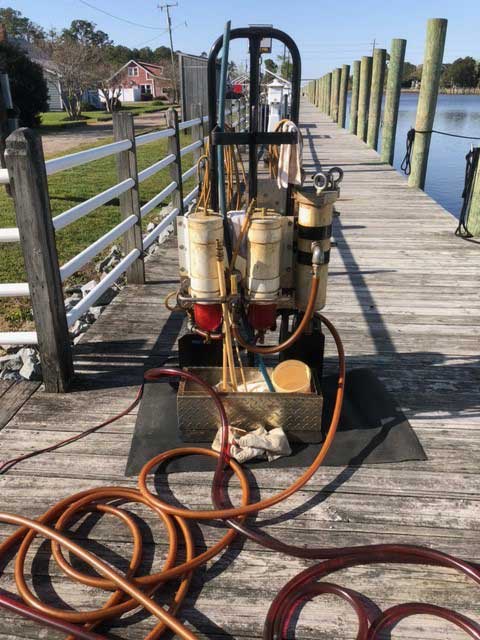
Brian and John didn’t need a lot of event detail to diagnose clogged fuel filters. I suspect they had seen this once or twice before. They changed the filters, bought me a couple of extra filters, and were off the boat by cocktail hour. All of us were confident the problem was solved. Not…
After dinner at the marina restaurant, Sue and I were off to bed. The next morning, we took off, fully expecting to be in Norfolk by early afternoon. We made it maybe 1000 yards from the marina. The first attempt to throttle up resulted in engine shutdown. The frown returned and deepened.
Cruisers on the ICW form a bond, sometimes over a simple exchange of knowing smiles and hellos on the dock. Fortunately for us a fellow traveler was right behind us and in no time towed us back to the dock at the Coinjock Marina.
John Lowell was on the dock that morning, coffee cup in hand. He joined the dock hands in an “arrested landing” as we were towed in with no power and drifted to the dock. He was then on the phone to Brian Scott. Together they speculated there must be a more serious contamination problem with the fuel.
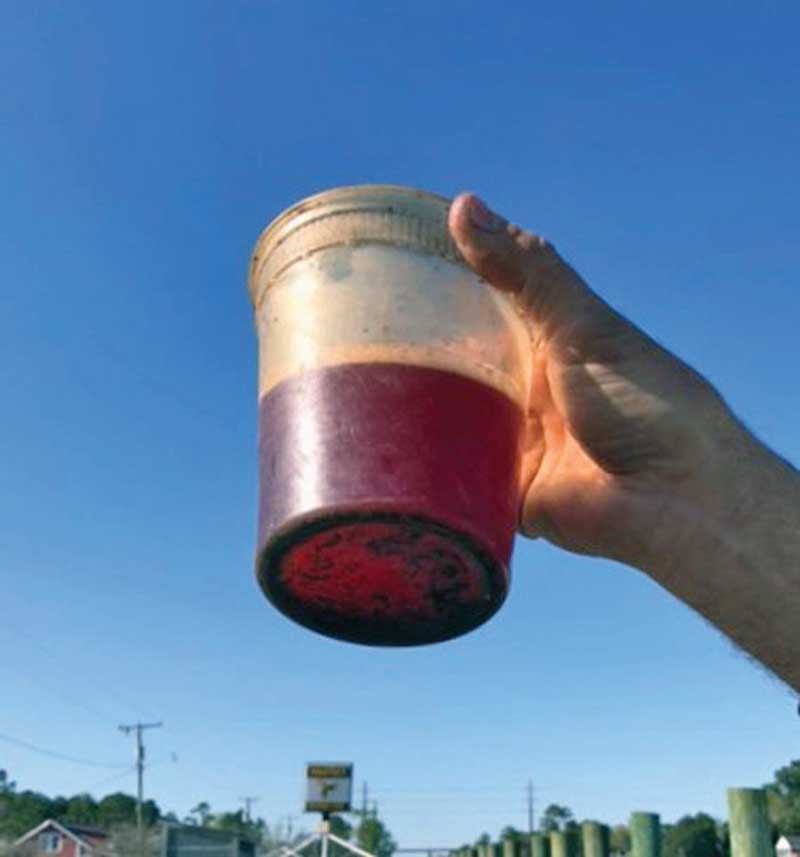
John found a service bulletin from Back Cove, the boat manufacturer, that called for the removal of an unauthorized screen from the end of the fuel pickup hose in the fuel tank. Sure enough, the service bulletin work had NOT been done. The pickup hose had a screen still on it and it was almost completely blocked with the dreaded fuel tank algae.
While John performed the removal of the screen as recommended in the service bulletin, Brian called his friend, Dave Trosien. Dave operates the local affiliate of USA Fuel Service. Their stock in trade is fuel polishing. Think of it as dialysis for boat fuel tanks.
Dave reported to Brian that he would not be able to get to us until early the next morning to polish the fuel. So, Sue and I spent an unplanned additional day in Coinjock. Fortunately, the marina restaurant was open for lunch and dinner. By the end of the unplanned lay day, we had enjoyed our third meal in 24 hours, in nearly the same seats.
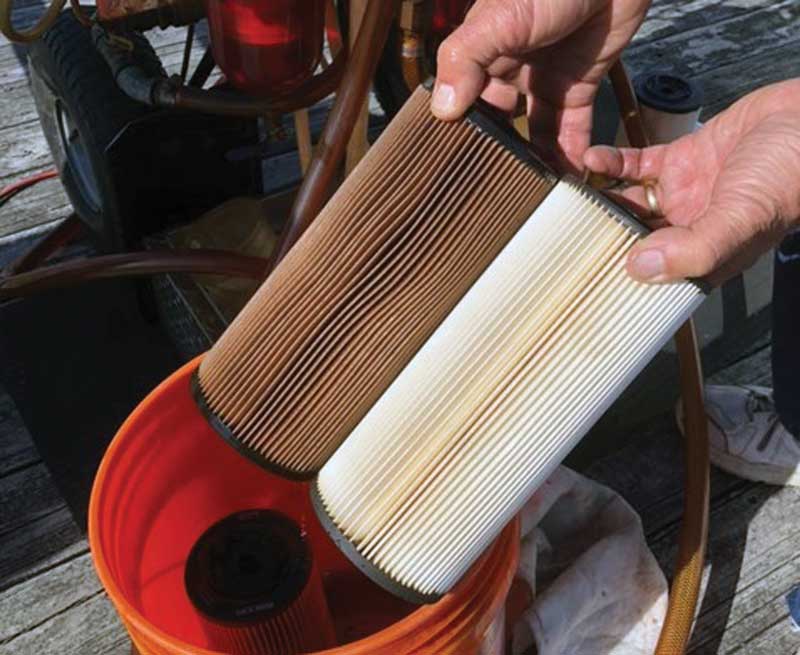
Dave Trosien arrived as scheduled early the next morning towing a large trailer with all the gear necessary for comprehensive fuel polishing. Watching the process is almost irresistible. There are seemingly miles of hoses. Those hoses connect to the fuel tank and the diesel flows out of the tank and into temporary storage containers after flowing through a series of fuel filters. Then, the filters are inspected and changed, and the process is reversed, pumping the fuel in the temporary tanks back through the filters a second time and then into the boat tank. Before the second pass, Dave used a bit of the fuel and a flexible wand to “vacuum clean” the bottom of the fuel tank.
As expected, the fuel filters were clearly plugged with large and small bits of fuel tank algae. Dave took the opportunity as a teachable moment. He advocated for the regular use of a biocide coupled with a fuel stabilizer in every tank of fuel.
The dialysis was done by late morning. John and Brian joined us for a mini sea trial to make sure we had the problem solved. This time throttle up was followed by the happy sound of a running engine and cruise speed, and full throttle runs were smooth and reassuring.
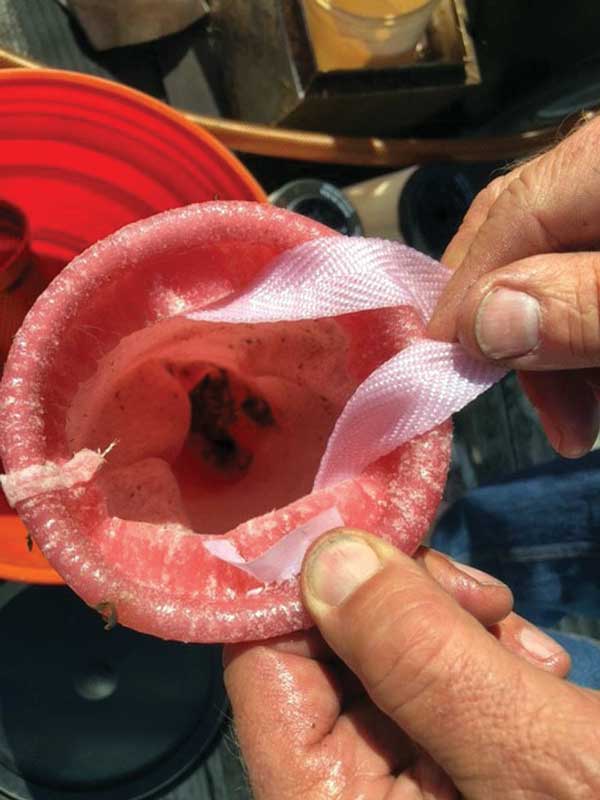
With that we were off to Norfolk a day late and a few dollars shorter, but happy to have solved a puzzle on the new boat.
The lesson learned courtesy of Dave Trosien is clear. Any boat that has seen light use and sat a while, as had our new purchase, needs to have the fuel stabilized and protected from growth in the fuel tank. Perhaps we should have anticipated this knowing the boat was lightly used. Now, we will follow Dave’s counsel and keep the fuel in top shape.
As nice as Tow BoatUS captain Brooks was, I really don’t want to get to know that many more Tow BoatUS captains on such an intimate basis.
By Mike Pitchford
Don't forget to check out these other articles by Mike Pitchford:
New Life For a Much Neglected Legacy 32